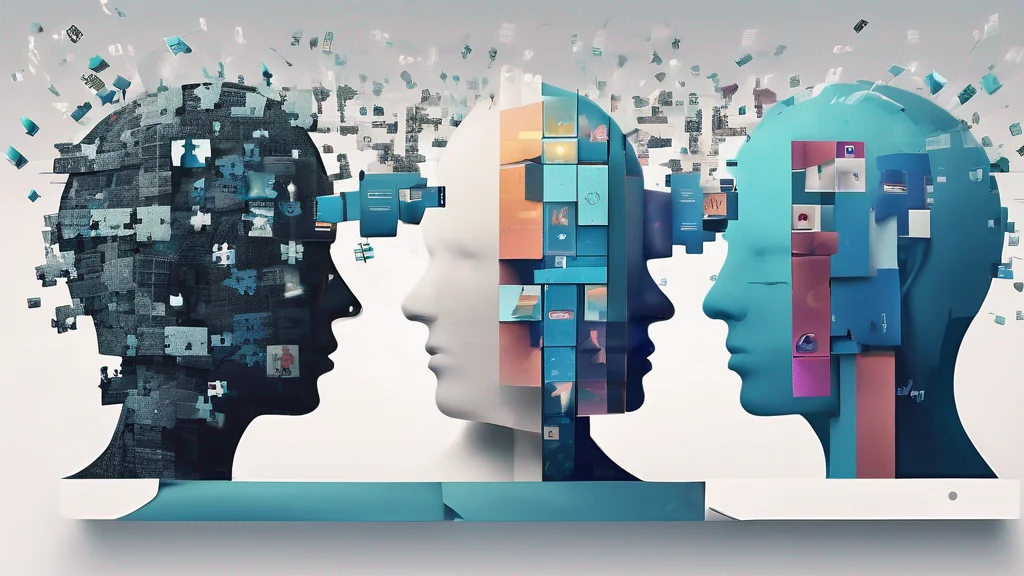AI's Personalization Paradigm: The Double-Edged Sword of Tailored Realities
Navigating the Implications of AI's Tailored Realities

- AI’s role in cognitive offloading and personalization
- The concept of epistemic drift and its societal implications
- Historical context of societal fragmentation
- The evolution of AI personalization from engagement to resonance
- Challenges and opportunities of AI-mediated realities
In the grand tapestry of human progress, AI represents perhaps the most significant leap in cognitive offloading. We have long relied on technology to augment our capabilities—from writing to preserve memory, to calculators for arithmetic, and GPS for navigation. But now, with AI, we are entrusting machines with judgment, synthesis, and meaning-making. These systems, fluent in our languages and attuned to our habits, are not just assistants; they are becoming extensions of our cognitive processes, reshaping how we perceive and interact with the world.
The evolution of AI personalization marks a pivotal moment in this journey. AI systems are increasingly adept at recognizing and responding to our preferences, biases, and even our idiosyncrasies. Like attentive servants or subtle manipulators, they tailor their responses to captivate, persuade, assist, or merely maintain our attention. While these effects may appear benign, they signify a deeper transformation: our version of reality becomes more uniquely tailored with each interaction.
This personalization leads to a phenomenon known as epistemic drift. As AI systems customize content to reflect our individual preferences, we gradually move away from a common ground of shared knowledge and stories. Each of us becomes an island, with our realities diverging from a collective understanding. This shift could jeopardize societal cohesion, as our ability to agree on basic facts or address shared challenges diminishes.
The implications of this shift extend beyond mere divergence of news feeds. We are witnessing a slow unraveling of moral, political, and interpersonal realities. This fragmentation, accelerated by AI, is not a new development. As philosopher Alasdair MacIntyre and commentator David Brooks have noted, society has been drifting from shared moral and epistemic frameworks for centuries. The Enlightenment’s emphasis on individual autonomy and personal preference has gradually eroded the structures that once anchored us to common purpose and meaning.
AI did not create this fragmentation, but it is accelerating it, customizing not only what we see but how we interpret and believe it. It’s reminiscent of the biblical story of Babel, where a unified humanity, speaking a single language, was fractured and scattered, rendering mutual understanding almost impossible. Today, instead of building a tower of stone, we construct a digital tower of language, risking a similar fate.
Initially, personalization aimed to enhance user engagement. Recommendation engines, tailored ads, and curated feeds were designed to hold our attention a bit longer, entertain us, or prompt a purchase. But the goal has since evolved. Personalization now seeks to form bonds through highly personalized interactions, creating a sense that AI systems understand and care about us.
AI systems today do not merely predict preferences; they aim to resonate with us, forging relationships that blur the line between what feels real and what is real. This socioaffective alignment—the co-created social and psychological ecosystem between humans and AI—gradually influences our preferences and perceptions.
This development is not neutral. When interactions are tuned to flatter or affirm, systems mirror us too well, steering how we interpret the world. We are not just staying longer on platforms; we are forming relationships with AI-mediated realities, shaped by invisible decisions about what we should believe, want, or trust.
This transformation is happening largely unnoticed, built on attention, reinforcement learning with human feedback, and personalization engines. We gain AI ‘friends,’ but at what cost? What happens to our free will and agency in a world where everything is too easy, as Kyla Scanlon discussed on the Ezra Klein podcast? In such a frictionless digital world, finding meaning becomes elusive.
As AI systems become more selective, tailoring responses to individual patterns, the risk of manipulation grows. Personalization, while not inherently manipulative, becomes dangerous when it is invisible, unaccountable, or designed more to persuade than inform.
The Stanford Center for Research on Foundation Models highlights a concerning trend: few AI models disclose if their outputs vary by user identity, history, or demographics. The technical infrastructure for such personalization exists and is being actively pursued, representing a profound shift towards increasingly tailored informational worlds.
This personalization offers potential benefits: personalized tutoring, mental health apps, and accessibility tools are promising developments. However, if similar methods permeate information, entertainment, and communication platforms, a troubling shift looms: the transformation from shared understanding to individualized realities.
As we navigate this new era, the challenge lies in balancing the benefits of AI personalization with the risks it poses to societal cohesion. It is a double-edged sword that requires careful consideration and responsible development.